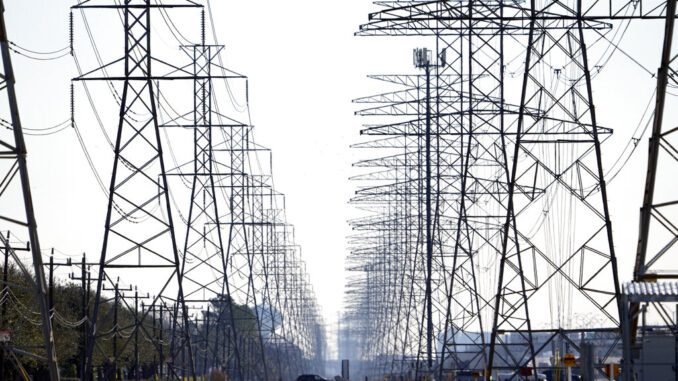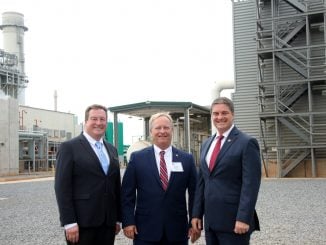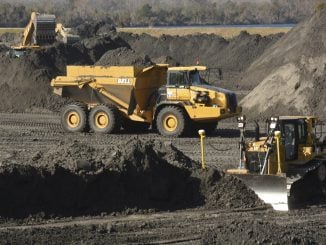
CHARLOTTE, N.C. — Duke Energy Corp. subsidiaries for North Carolina and South Carolina have offered to regulators an adjusted electricity production proposal that the utilities say responds to surging demand projections while still reaching for future greenhouse gas reduction targets.
Duke Energy said the update to a recent Carolinas Resource Plan, filed on Wednesday with both states, incorporates new energy modeling from the fall that reflects “unprecedented” economic development growth in the region in 2023. The increased electric demand means the growth by 2030 in estimated peak load, or the maximum power demand on an electrical system, is now eight times the growth that was projected two years ago.
To meet this demand, the utilities propose further increasing their use of natural gas plants that could also run on hydrogen, as well as solar power and electricity storage in batteries.
“This additional growth is unprecedented, historic in both size and speed,” Duke Energy North Carolina President Kendal Bowman said in a video message released Wednesday. “So to meet customers’ needs, we’re proposing to accelerate every resource available to us.”
The proposal also envisions 2,400 megawatts of offshore wind production off the North Carolina coast by 2035. Such offshore wind projects weren’t contained in Duke Energy’s previous near-term energy production portfolio, as such wind farms still have been in the planning stages.
Company proposals last summer to consider building an “advanced nuclear” plant in Stokes County, North Carolina, improve grid efficiency and curb demand remain in place. The utilities already plan to fully retire their coal-fired fleet by 2035.
A new element of natural-gas growth is a proposal for a second such plant in Person County, North Carolina, located next to a coal-powered plant slated for closure in the coming years. A similar plant is also anticipated for South Carolina, according to a Duke Energy plan summary.
Regulators in both states decide whether Duke’s plan can be carried out. Duke Energy Progress and Duke Energy Carolinas serve 3.7 million customers in North Carolina and 830,000 customers in South Carolina.
A 2021 North Carolina law directed that Duke Energy reduce carbon dioxide emissions it produces in the state by 70% by 2030, as compared with 2005 levels. But the law permits the state Utilities Commission to delay meeting that goal beyond 2030 in the interest of protecting electric grid supplies or if certain nuclear and wind-generation construction is authorized.
As it did last August, Duke Energy offered to the commission Wednesday three portfolio mixes that respectively would meet the 70% reduction target by 2030, 2033 and 2035. These mixes would raise customer power bills by differing levels.
The companies still prefer the 2035 date “as the most reasonable, least cost, least risk plan to reliably transition the system and prudently plan for the needs of their customers at this time,” Duke Energy attorneys wrote on Wednesday to the commission. That law also calls for net-zero emissions by 2050, which Duke Energy said it remains on track to meet.
South Carolina lacks a similar carbon emissions mandate in state law, but Duke Energy pointed out that many customers — large corporations among them — have set clean energy goals that align with its efforts.
Critics of Duke’s previous energy production plans said they depended too heavily on natural gas and were too slow to embrace renewable energy.
While the addition of offshore wind is commendable, Wednesday’s plan “once again relies too heavily on fossil gas, nuclear, and expensive infrastructure that our state does not need,” Michelle Carter with the North Carolina League of Conservation Voters said in a news release.
The North Carolina Utilities Commission and Public Service Commission of South Carolina will receive comment and conduct hearings on the updated plan. Both states should make formal decisions on them by the end of the year, starting with South Carolina regulators in November, Duke Energy said.



